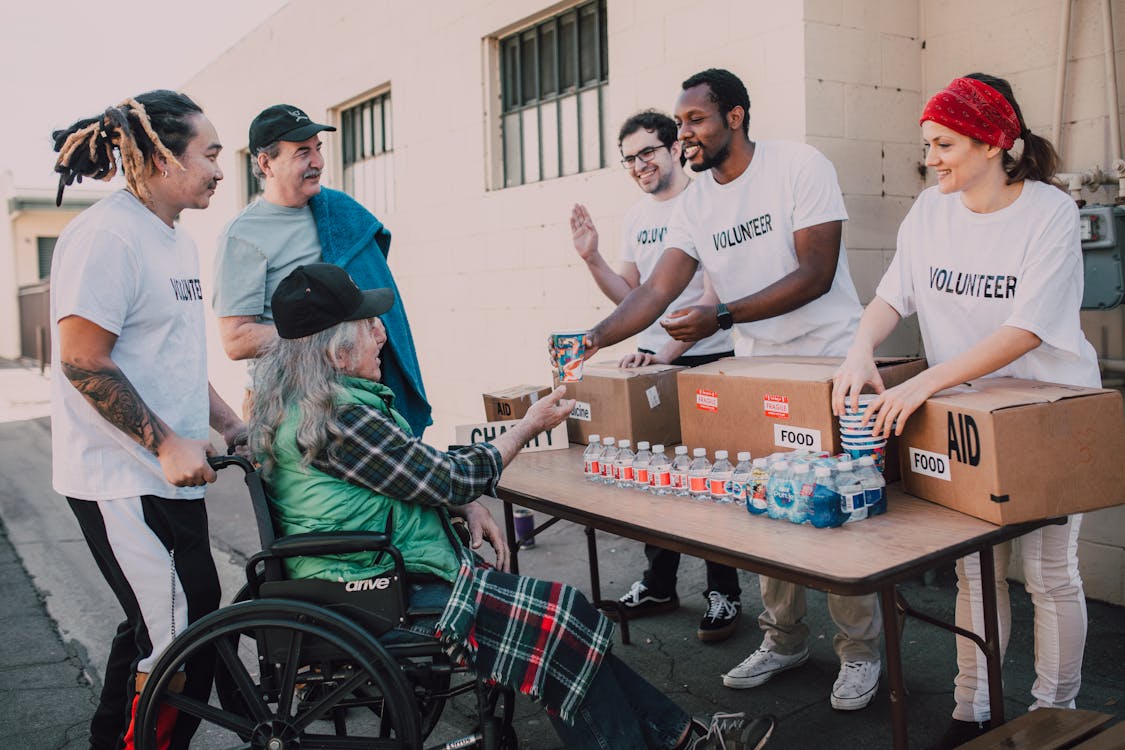Table of Contents
- Why Prioritize Family Bonding? More Than Just Fun and Games
- Setting the Stage for Success: Tips for Planning Family Activities
- Get Outdoors: Fresh Air and Family Adventures
- Indoor Fun: Cozy Connections When You Can’t Get Out
- Creative & Learning Adventures: Expanding Horizons Together
- Giving Back: Bonding Through Community Service
- Budget-Friendly Bonding: Fun Doesn’t Have to Cost a Fortune
- Bridging the Generations: Activities Grandparents, Parents, and Kids Love
- Adapting for All Ages: Making Activities Inclusive
- Conclusion: The Lasting Impact of Shared Moments
Beyond the Screen: Unforgettable Family Bonding Activities for All Ages
Remember those lazy Sunday afternoons? The ones filled not with scrolling feeds, but with shared laughter echoing through the house, the smell of baking cookies, or the thrill of a closely contested board game? In our hyper-connected, fast-paced world, carving out genuine quality time with family can feel like a monumental task. Between work deadlines, school schedules, extracurriculars, and the constant ping of notifications, meaningful connection often takes a backseat. But what if rediscovering that connection was easier, and more fun, than you thought?
Creating lasting memories and strengthening family ties doesn’t require expensive vacations or elaborate plans. It’s about being present, engaging with each other, and finding joy in shared experiences. The challenge, however, often lies in finding family bonding activities that genuinely appeal to *everyone* – from toddlers discovering the world to teenagers navigating independence, and grandparents cherishing every moment. This guide is here to bridge that gap. We’ll explore a treasure trove of ideas, packed with practical tips, designed to bring your family closer, regardless of age or interest. Get ready to unplug, reconnect, and build a bank of cherished memories that will last a lifetime.
Why Prioritize Family Bonding? More Than Just Fun and Games
Before diving into the ‘what,’ let’s touch upon the ‘why.’ Why is dedicated family bonding so crucial? It’s far more than just a nice-to-have; it’s fundamental to the health and happiness of every family member.
- Stronger Emotional Connections: Regularly spending positive time together builds trust, empathy, and understanding. It creates a safe space where family members feel seen, heard, and valued.
- Improved Communication: Shared activities naturally open doors for conversation. Whether discussing game strategy, collaborating on a project, or simply chatting during a walk, bonding time enhances communication skills.
- Reduced Behavioral Issues: Studies show that children and teens who spend regular quality time with their families tend to exhibit fewer behavioral problems and are less likely to engage in risky behaviors.
- Enhanced Well-being: Strong family connections are linked to increased self-esteem, better stress management, and overall greater life satisfaction for individuals of all ages.
- Building Lasting Memories: These shared experiences become the stories you tell for years to come – the disastrous baking attempt that ended in laughter, the triumphant hike to a beautiful view, the cozy movie night under a blanket fort. These are the building blocks of your family’s unique history.
- Passing Down Values: Family activities provide organic opportunities to share family stories, traditions, and values across generations.
Investing in family time is investing in the emotional bedrock of your family unit. It’s a proactive way to nurture relationships and build resilience together.
Setting the Stage for Success: Tips for Planning Family Activities
Okay, you’re convinced. More family time it is! But how do you make it happen smoothly, especially with diverse ages and preferences? Here are some practical tips:
Involve Everyone in the Planning
Don’t just dictate the activity. Hold a casual family meeting or create a suggestion jar. Ask everyone – yes, even the youngest who can express a preference – what they’d enjoy doing. This fosters buy-in and makes everyone feel like their opinion matters. You might rotate who gets to choose the activity each week or month.
Schedule It (Seriously!)
In today’s world, if it’s not scheduled, it often doesn’t happen. Treat family fun time with the same importance as any other appointment. Put it on the calendar, whether it’s a weekly game night, a monthly outing, or even just 30 minutes of dedicated playtime each evening. Consistency is key.
Be Flexible and Manage Expectations
Not every activity will be a runaway success, and that’s okay! Sometimes the toddler will have a meltdown, the teenager will feign boredom (initially), or the weather won’t cooperate. Roll with it. The goal is connection, not perfection. Sometimes the unexpected detours create the best memories. Lower the pressure and focus on being together.
Ditch the Devices (Mostly)
Make a conscious effort to put phones, tablets, and laptops away during dedicated family time. True connection happens when you’re present and engaged with each other, not distracted by notifications. There might be exceptions (using a phone for music or a recipe), but aim for tech-free bonding whenever possible.
Keep It Age-Appropriate (But Adaptable)
Choose activities that have elements enjoyable for different age groups, or find ways to adapt. A complex board game might be simplified for younger players, or older kids can help toddlers with a craft project. The goal is shared participation, even if the level of involvement varies.
Now, let’s get to the fun part – the ideas!

Get Outdoors: Fresh Air and Family Adventures
There’s something inherently bonding about exploring the great outdoors together. Nature offers a fantastic backdrop for connection and fun for all ages.
Nature Walks & Hiking
Choose trails suitable for the least experienced walker in your group. Even a simple walk in a local park can be an adventure. Turn it into a scavenger hunt (find something smooth, something rough, a specific color leaf), identify birds or trees, or simply enjoy the conversation. Pack snacks and water!
Park Play & Picnics
A classic for a reason! Parks offer space to run, play games (frisbee, tag, catch), and relax. Pack a picnic basket (involve the kids in making sandwiches or packing snacks) and enjoy a meal together on a blanket. Many parks have playgrounds catering to various ages.
Backyard Camping (or Glamping!)
Pitch a tent in the backyard for a night under the stars. Tell stories, roast marshmallows (safely!), and enjoy the novelty of sleeping outdoors without venturing far. Too cold or buggy? Bring the sleeping bags inside for an indoor ‘camping’ adventure in the living room.
Gardening Together
Whether you have a large plot or just a few pots on a balcony, gardening is a wonderful multi-generational activity. Little ones can dig and water, older kids can learn about plant cycles, and everyone can enjoy the satisfaction of growing something together – flowers, herbs, or vegetables.
Visit a Farm or Nature Center
Many communities have local farms, orchards, or nature centers that welcome visitors. Petting zoos, hayrides, apple picking, or guided nature walks offer engaging experiences for all ages, combining fun with learning about agriculture and the local environment.
Indoor Fun: Cozy Connections When You Can’t Get Out
Rainy days or chilly evenings are perfect opportunities for cozy indoor bonding.
Family Game Night/Afternoon
Dust off those board games, break out the card decks, or tackle a jigsaw puzzle together. Choose games that work for your family’s age range. Cooperative games (where you work together against the game) can be great for fostering teamwork. For younger kids, simple classics like charades or Pictionary are always winners. Let different family members teach their favorite games.

Movie Marathon with a Twist
Popcorn is essential, but elevate movie night! Build a comfy fort with blankets and pillows. Choose a theme (e.g., a specific actor, a movie series, animated classics). Make themed snacks. Afterwards, talk about your favorite parts, characters, or what you learned.
Cook or Bake Together
The kitchen is a fantastic place for connection. Choose a recipe together – simple cookies, pizza from scratch, a family favorite dish, or even just decorating cupcakes. Assign age-appropriate tasks: little ones can stir or add pre-measured ingredients, older kids can chop or read the recipe, and everyone can enjoy the delicious results. It teaches life skills and teamwork.

Read Aloud Sessions
Rediscover the joy of being read to, or reading together. Choose a chapter book to read over several nights, take turns reading paragraphs from a short story, or explore picture books (even older kids enjoy the art and nostalgia). For diverse ages, pick something with broad appeal or let older siblings read to younger ones.
Creative Craft Time
Gather supplies like paper, crayons, paint, glue, recycled materials (cardboard boxes, tubes), play-doh, or clay. You don’t need a specific project; just let everyone create! Put on some music and enjoy the process. Alternatively, tackle a simple guided craft found online or in a kit. The focus is on expression and shared creativity, not a perfect product.
Build an Epic Fort
Use blankets, pillows, chairs, and couches to construct an amazing indoor fort. It’s a collaborative engineering project! Once built, it becomes a cozy haven for reading, playing games, or just hanging out.
Creative & Learning Adventures: Expanding Horizons Together
Bonding can also happen through shared learning and creative expression outside the typical ‘fun’ categories.
Museums, Galleries, and Science Centers
Explore local cultural institutions. Choose exhibits based on current interests. Don’t try to see everything; focus on a few areas that spark curiosity. Many museums have interactive displays designed for kids, making learning engaging for all.
Attend a Workshop or Class
Look for family-friendly workshops – pottery painting, cooking classes, introductory music lessons, coding for kids. Learning a new skill together can be incredibly rewarding and reveal hidden talents.
Family Talent Show
Encourage everyone to prepare a ‘talent’ – singing a song, telling jokes, performing a magic trick, playing an instrument, reading a poem, showing off a drawing. It’s about participation and cheering each other on, not professional performance. Keep it lighthearted and fun!
Storytelling Sessions
Start a story with a single sentence and have each family member add the next line, building a collaborative tale. Or, share family history – ask grandparents to tell stories about their childhood, or recount funny moments from when the parents were kids. Looking through old photo albums often sparks great storytelling.
Giving Back: Bonding Through Community Service
Working together to help others fosters empathy, gratitude, and a strong sense of shared purpose.
Local Volunteering
Find age-appropriate volunteer opportunities. This could be sorting donations at a food bank, helping at an animal shelter (walking dogs, socializing cats), participating in a community garden, or visiting residents at a nursing home (check policies first).
Community Cleanups
Join or organize a cleanup event at a local park, beach, or neighborhood street. It teaches environmental responsibility and provides a tangible sense of accomplishment.
Help a Neighbor
Offer to rake leaves, shovel snow, walk a dog, or run errands for an elderly or busy neighbor. It’s a simple way to show kindness as a family unit.

Budget-Friendly Bonding: Fun Doesn’t Have to Cost a Fortune
Meaningful connection doesn’t require deep pockets. Many fantastic family bonding activities are free or very low-cost.
Library Adventures
Your local library is a treasure trove! Borrow books, movies, and music. Attend free story times, workshops, or author events. Many libraries have play areas or teen zones.
Explore Free Community Events
Check local community calendars for free concerts in the park, festivals, farmers’ markets (fun for browsing even if you don’t buy much), or holiday events.
Nature’s Playground
As mentioned before, walks, hikes, park visits, and backyard fun are largely free. Add stargazing on a clear night (use a free app to identify constellations) or cloud watching and imagining shapes.
Themed Dinner Nights at Home
Pick a theme (e.g., Mexican Fiesta, Italian Night, Pajama Breakfast-for-Dinner). Plan the menu together, decorate (even simply), maybe play related music or watch a movie from that culture. It adds excitement to a regular mealtime.
Look Through Old Photos & Videos
Pull out the dusty albums or digital files. Sharing memories, laughing at old hairstyles, and telling the stories behind the pictures is a heartwarming and completely free activity that connects generations.
Bridging the Generations: Activities Grandparents, Parents, and Kids Love
Intentional intergenerational activities create unique bonds and allow for the sharing of wisdom and experience.
Sharing Skills & Stories
Ask grandparents to teach a skill they excel at – knitting, baking a traditional recipe, basic woodworking, gardening tips, playing a card game from their youth. Conversely, kids can teach grandparents about technology (patiently!). Sharing stories about ‘the old days’ is invaluable.
Simple Games
Focus on games that are easy to learn and don’t require intense physical activity or complex strategy, unless everyone is capable. Classics like checkers, dominoes, simple card games (Go Fish, Crazy Eights), or even Bingo work well.
Looking at Heirlooms and Photos
As mentioned earlier, exploring family history through objects and photos is a powerful connector. Ask about the stories behind heirlooms or identify people in old pictures.
Gentle Outdoor Activities
A slow-paced walk in a botanical garden, feeding ducks at a pond (use appropriate food like oats, not bread!), or simply sitting on a porch swing together and talking can be lovely shared moments.
Cooking Traditional Family Recipes
Preserve family heritage by cooking a beloved recipe together. Grandparents can lead the way, sharing tips and stories associated with the dish, creating a delicious and meaningful experience.
Adapting for All Ages: Making Activities Inclusive
The key to successful family activities for all ages is often adaptation.
- Toddlers & Preschoolers: Keep it short, sensory-rich, and allow for breaks. Focus on simple participation like stirring, pouring, singing, or exploring textures. Safety is paramount.
- Elementary Age Kids: They love rules, games, and learning new things. Introduce strategy games, more complex crafts, and activities where they can take on specific roles or responsibilities.
- Teenagers: Give them choices and ownership. Involve them in planning. Tap into their interests (music, technology, social causes). Don’t force enthusiasm, but create opportunities for them to join in comfortably. Sometimes just being in the same space, even doing parallel activities (like reading while others play a game), counts. Acknowledge their need for independence but create low-pressure invitations to connect.
- Grandparents/Seniors: Consider mobility and energy levels. Choose comfortable settings. Focus on activities that facilitate conversation and shared enjoyment rather than strenuous physical exertion (unless they are active and willing). Value their experience and stories.
Think about how an activity can be layered. During a family hike, perhaps the younger kids look for items on a scavenger list near the trailhead with one adult, while older kids and adults tackle a slightly more challenging loop. When baking, toddlers can decorate while older kids handle measuring and mixing.
Conclusion: The Lasting Impact of Shared Moments
Building a strong, connected family doesn’t happen by accident. It requires intention, effort, and a willingness to prioritize quality time together. The myriad of family bonding activities available means there’s something out there for every family, regardless of age configuration, budget, or interests.
Don’t feel pressured to do everything. Start small. Choose one or two ideas that resonate with your family and schedule them in. The most important ingredient isn’t the activity itself, but the spirit behind it – the laughter, the shared experiences, the focused attention, and the love that grows when you intentionally make space for connection.
These moments, big and small, are the threads that weave the rich tapestry of your family’s story. They build resilience, foster understanding, and create memories that will warm hearts for generations to come. So, put down the phone, gather your loved ones, and start building those connections today. The rewards are truly immeasurable.










